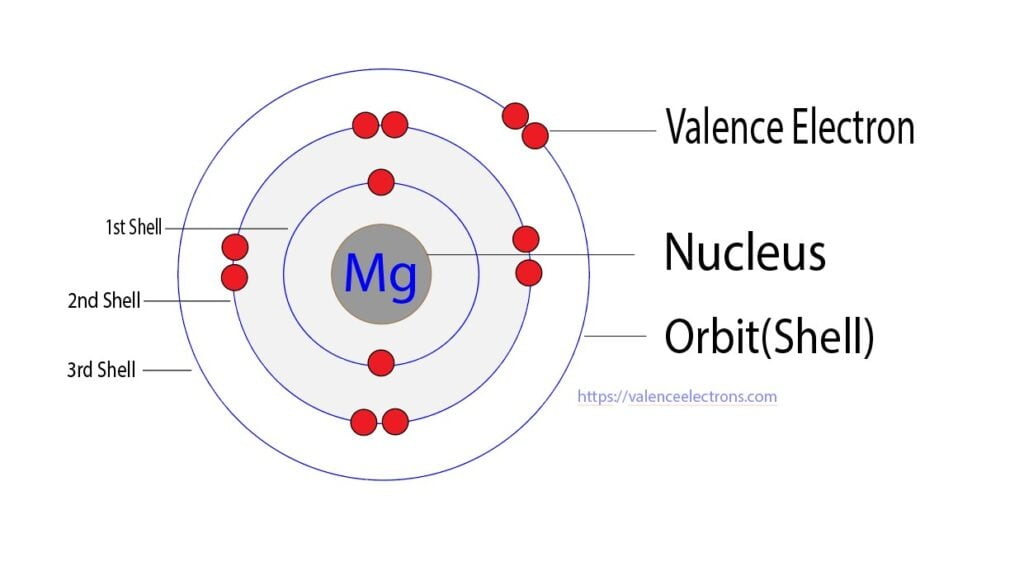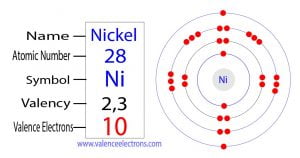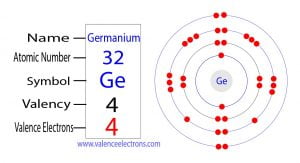How to Find the Valence Electrons for Magnesium (Mg)?
The 12th element in the periodic table is magnesium. Magnesium is an alkaline earth metal and its symbol is ‘Mg’. Magnesium participates in the formation of bonds through valence electrons.
What are the valence electrons of magnesium?
The second element in group-2 is magnesium. All the elements of group-2 are called alkaline earth metals. Therefore, magnesium is an alkaline earth metal.
The valence electron is the total number of electrons in the last orbit(shell). The total number of electrons in the last shell after the electron configuration of magnesium is called the valence electrons of magnesium.

The valence electrons determine the properties of the element and participate in the formation of bonds.
How do you calculate the number of valence electrons in a magnesium atom?
The valence electron has to be determined by following a few steps. The electron configuration is one of them. It is not possible to determine the valence electron without electron configuration.
Knowing the electron configuration in the right way, it is very easy to determine the valence electrons of all the elements.
However, valence electrons can be easily identified by arranging electrons according to the Bohr principle. Now we will learn how to determine the valence electron of magnesium(Mg).
Step-1: Determining the total number of electrons in magnesium
First we need to know the total number of electrons in the magnesium atom. To know the number of electrons, you need to know the number of protons in magnesium.
And to know the number of protons, you need to know the atomic number of the magnesium element.

To know the atomic number we need to take the help of a periodic table. It is necessary to know the atomic number of magnesium elements from the periodic table.
The atomic number is the number of protons. And electrons equal to protons are located outside the nucleus.
That is, we can finally say that there are electrons equal to the atomic number in the magnesium atom.
From the periodic table, we see that the atomic number of magnesium is 12. That is, a magnesium atom has a total of twelve electrons.
Step-2: Need to do electron configuration of magnesium
Step 2 is very important. In this step, the electrons of magnesium have to be arranged. We know that magnesium atoms have a total of twelve electrons.
The electron configuration of magnesium shows that there are two electrons in the K shell, eight in the L shell, and two in the M shell(orbit).

That is, the first shell of magnesium has two electrons, the second shell has eight electrons and the 3rd shell has two electrons.
Step-3: Determine the valence shell and calculate the total electrons
The third step is to diagnose the valence shell(orbit). The last shell after the electron configuration is called the valence shell. The total number of electrons in a valence shell is called a valence electron.
The electron configuration of magnesium shows that the last shell of magnesium has two electrons. Therefore, the valence electrons of magnesium are two.
Video for Valence Electrons for Magnesium (Mg)
What is the valency of magnesium?
The ability of one atom of an element to join another atom during the formation of a molecule is called valency(valence). There are some rules for diagnosing valency.
The number of electrons in an unpaired state in the last orbital after the electron configuration of an atom is called the valency of that element.

The electron configuration of magnesium shows that it has two unpaired electrons in the last orbital. Therefore, the valency of magnesium is 2.
How many valence electrons does magnesium ion(Mg+2) have?
After the electron configuration, the last shell of the magnesium atom has two electrons. In this case, the valency of magnesium is 2.
We know the details about this. The elements that have 1, 2, or 3 electrons in the last shell donate the electrons in the last shell during bond formation.
The elements that form bonds by donating electrons are called cations. That is, magnesium is a cation element. Magnesium donates the electron of the last shell to form bonds and turns into magnesium ions.
Mg – 2e– → Mg+2
The electron configuration of magnesium ion(Mg+2) is 1s2 2s2 2p6.
The electron configuration of magnesium-ion shows that magnesium ions have only two shells and the last shell has eight electrons.
The electron configuration shows that the magnesium atom has acquired the electron configuration of neon.
That is, in this case, the valence(valency) of the magnesium ion is +2. Since the last shell of a magnesium ion has eight electrons, the valence electrons of magnesium ion(Mg+2) are eight.
Compound formation of magnesium
Magnesium participates in the formation of bonds through its valence electrons. We know that the valence electrons in magnesium(Mg) are two.
This valence electron participates in the formation of bonds with atoms of other elements.
The electron configuration of oxygen shows that the valence electrons of oxygen are six. The magnesium atom donates its valence electrons to the oxygen atom and the oxygen atom receives those electrons.
As a result, oxygen acquires the electron configuration of neon, and magnesium atoms also acquire the electron configuration of neon.
Magnesium oxide(MgO) is formed by the exchange of electrons between one atom of magnesium and one atom of oxygen. Magnesium oxide(MgO) is ionic bonding.






